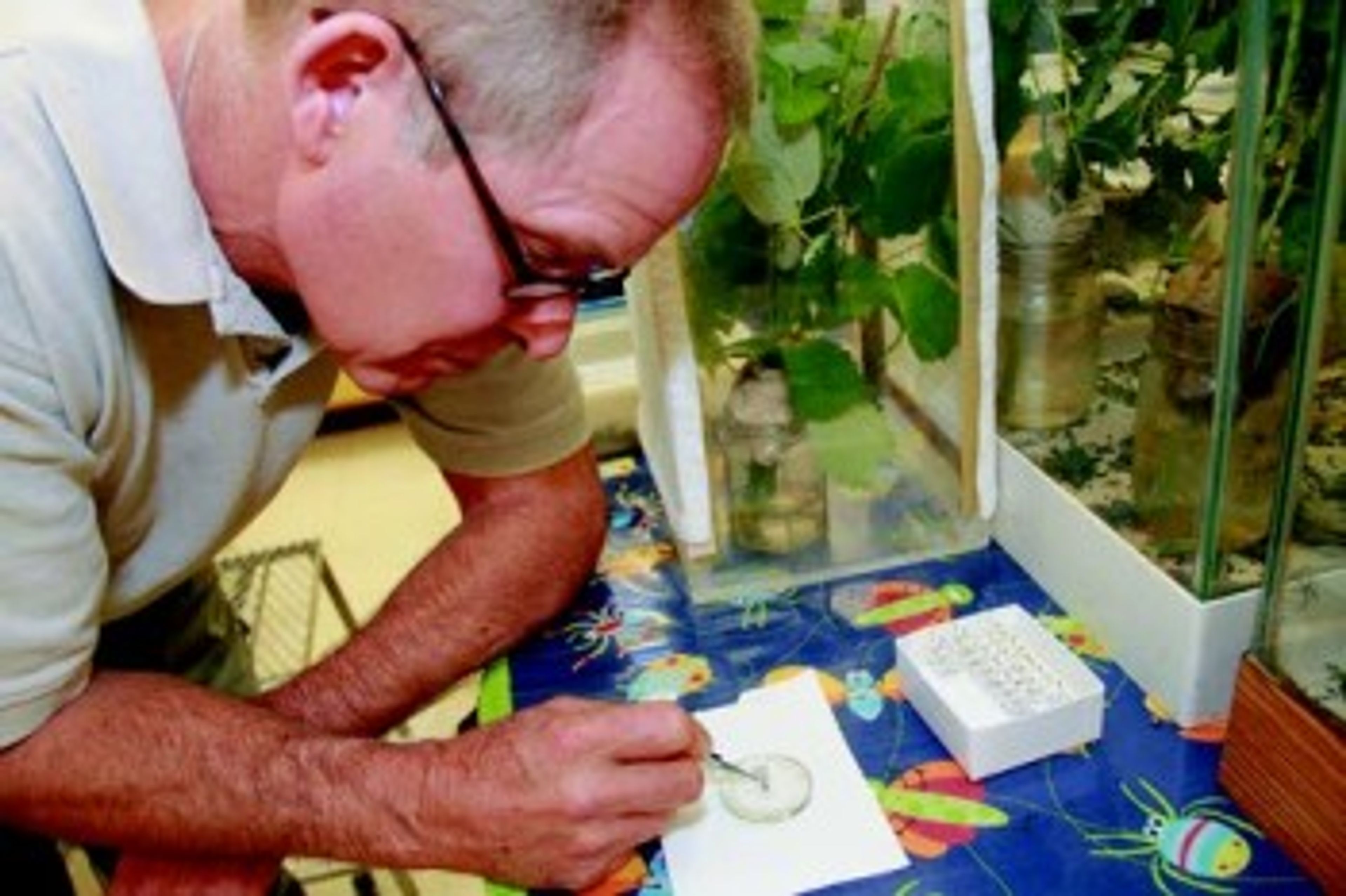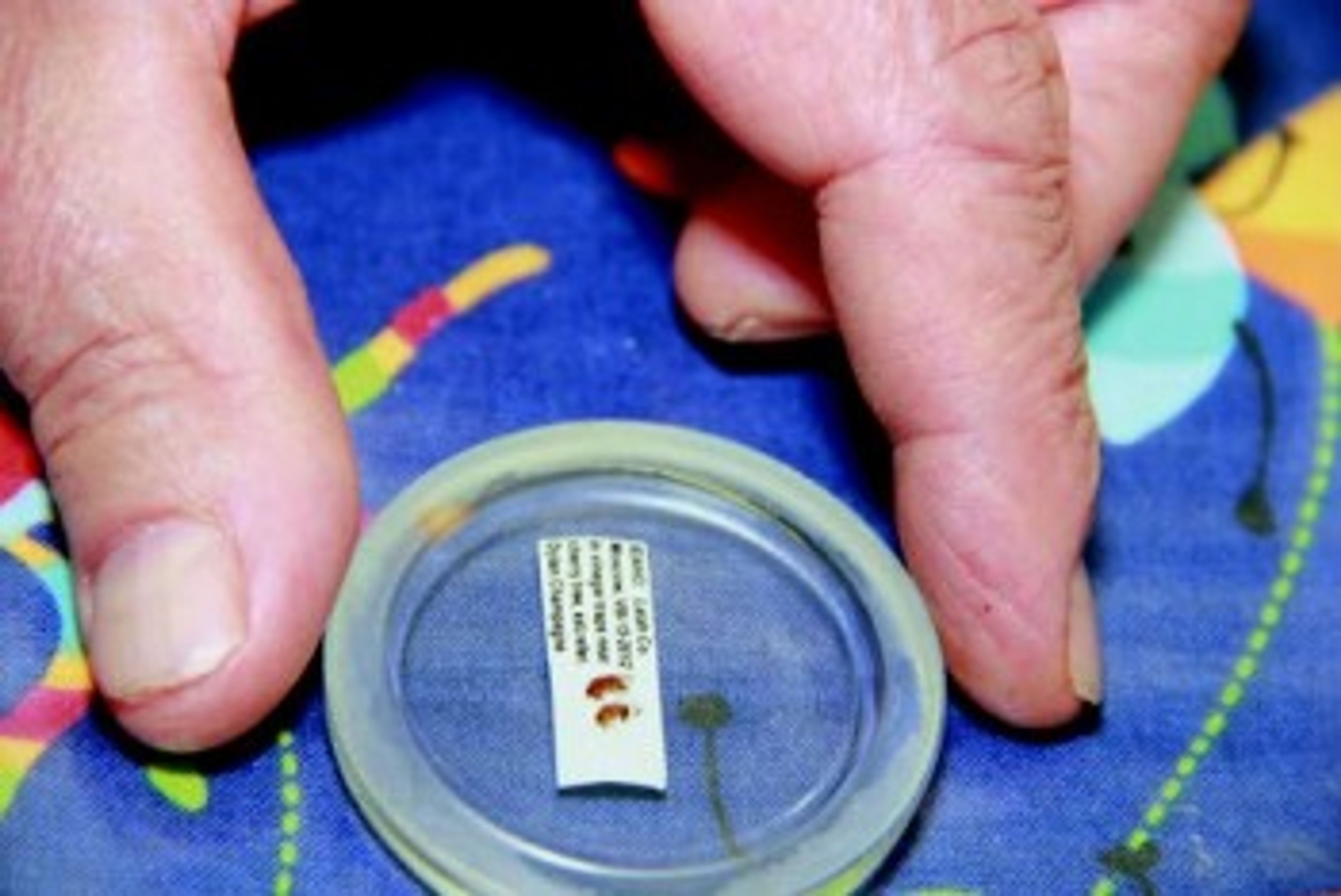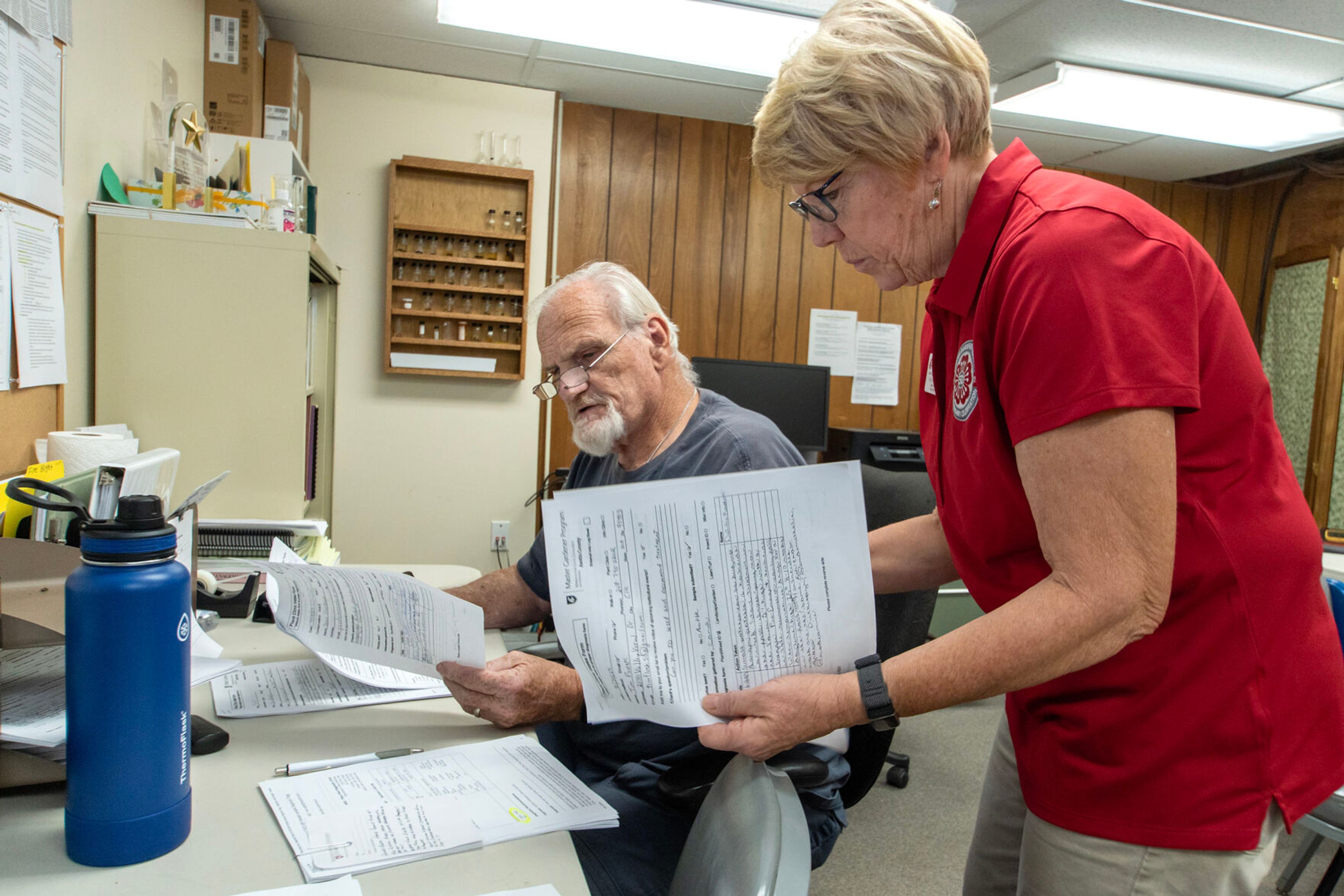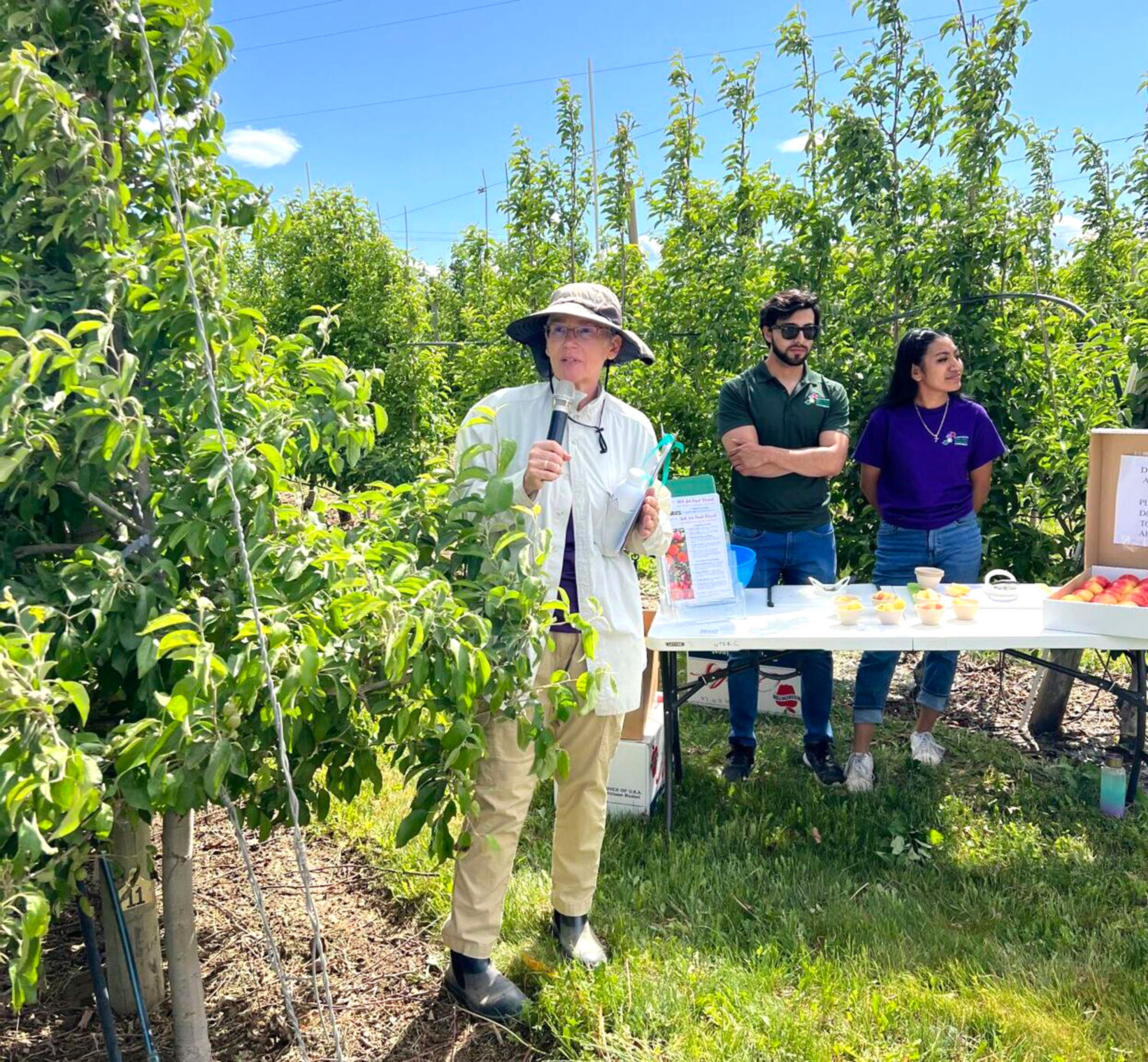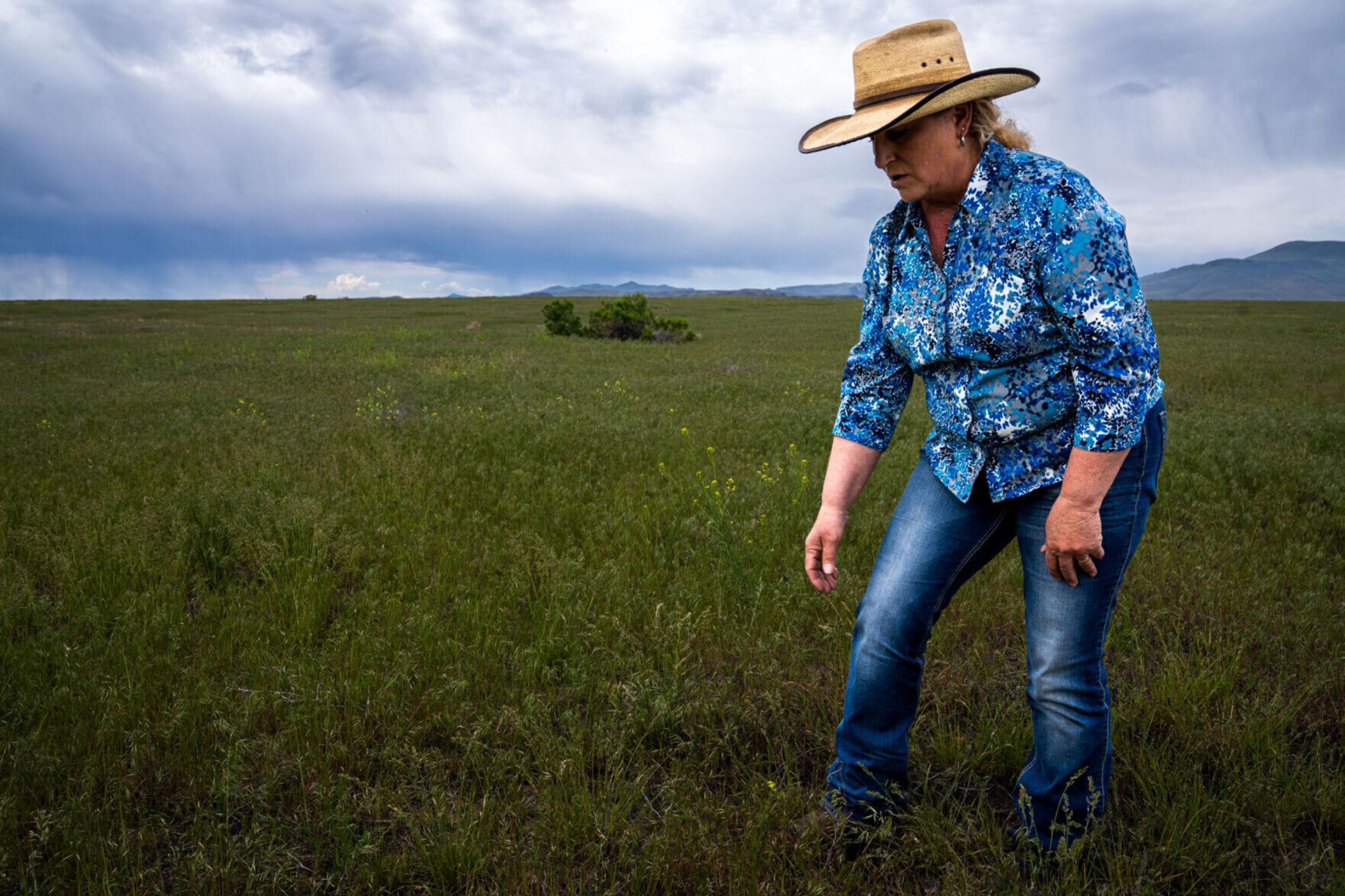Moscow homeowner discovers fruit pest
Exotic fly threatens soft fruits such as cherries, peaches, grapes and more
MOSCOW -- University of Idaho Extension entomologists have confirmed the first Idaho discovery of an exotic fruit fly, the spotted wing drosophila, that can damage a wide variety of soft fruits from berries and cherries to grapes and peaches.
Dylan Champagne, a Moscow homeowner, initially reported to the University of Idaho Extension Latah County office that his cherry crop was infested.
After a beautiful crop of cherries last year, Champagne was disappointed to find a pest had destroyed this year's entire crop. "When we were picking, we saw that just about every cherry had a hole in it and then we saw that the cherries had white worms in them."
His problem sounded like a typical one stemming from the cherry fruit fly. He followed the recommendations to clean up and dispose of all infested fruit that had dropped from the tree.
Champagne noticed the flies around the fruit did not look like the typical cherry fruit fly. "I saw a lot of little fruit flies when I was raking and they looked different," he said.He turned to the web and found a description and photos of spotted wing drosophila that seemed to fit.
"My hat's off to him. He did a really good job of identifying what he had," said Ed Bechinski, Extension integrated pest management specialist in the College of Agricultural and Life Sciences at Moscow.
The news is important for Idaho orchardists, grape growers and gardeners, who will want to place traps to monitor for the pests. If spotted wing drosophila does appear, spraying or other control methods are an option, Bechinski said.
Calling them vinegar, not fruit, flies is the more accurate name for drosophila, said University of Idaho entomologist Frank Merickel, who manages the Barr Entomological Laboratory in the College of Agricultural and Life Sciences. That's because drosophila may live on fruit, but they crave vinegar.
A followup investigation at Champagne's cherry tree with vinegar traps provided plenty of specimens for Merickel to confirm the spotted wing drosophila identification. Smaller than a grain of rice and a tan body with red eyes, the pest's most identifiable feature is a single spot on each wing of the males. Females lack the spot.
The appearance of spotted wing drosophila in Moscow isn't a complete shock, although it is an unwelcome surprise, Bechinski said.
The imported pest, a native of China and Japan, was originally found in California in 2008, where it caused extensive damage to strawberry crops. The pest soon spread northward in 2009 to western Oregon and Washington.
The pest was found in 2010 near Pendleton, Ore. Last year it was found near Kalispell, Mont. Four years ago, researchers formed a task force to better understand the pest's threat and predict its future distribution, Bechinski said.
Mike Cooper, of the Idaho State Department of Agriculture's Plant Industries Division, mirrored Bechinski's thoughts on the pest.
"We knew it had been found in Oregon, Washington and even Montana, so it was a matter of time before it was Idaho's turn," Cooper said. "I guess the good news is that this particular insect can be fairly well managed with good survey and treatment techniques, but it will require extra attention and diligence from Idaho's fruit growers."
Given the number of pests on Champagne's cherry tree, Bechinski suspects the pest has been in the Moscow area for a while.
The task force predicted cold winter weather would largely confine the spotted wing drosophila to west of the Cascades, except for a narrow finger that reached inland along the Columbia River system to the Palouse and northwestern Montana.
Gardeners or others who suspect they've found spotted wing drosophila are encouraged to submit them to University of Idaho Extension for examination. Bechinski asked that those who do submit samples use alcohol to preserve insects and infested fruit. No live specimens should be sent. Samples should be packaged in crush-proof containers.
Samples may be sent to Frank Merickel, Barr Entomological Museum, College of Agricultural and Life Sciences, PO Box 442339, Moscow, ID 83844. Samples also may be given to University of Idaho County Extension offices.
